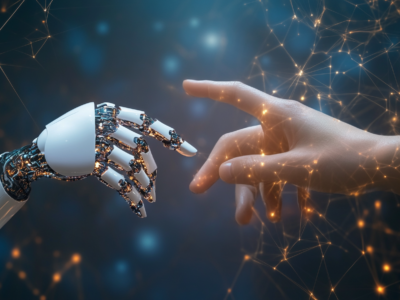With the advent of AI,the way we create videos is about to undergo a radical transformation. OpenAI, known for its spectacular advances in AI with tools such as ChatGPT and DALL-E, today presents Sora, its text-to-video generator.
What is Sora?
Sora is an AI technology for creating realistic videos up to one minute long.
What sets Sora apart from other content generation tools is its ability to produce videos of stunning quality and realisms, with remarkable ease of use.
The Sora model is a technological feat capable of creating realistic video sequences of up to one minute from simple text prompts.
Sora’s innovation includes simulating aspects of the physical world with unprecedented precision
Users can generate complex scenes, from natural landscapes to animated cityscapes, simply by providing a text description of what they want to see.
The Foundations of Sora
Sora’s operation is based on advanced deep learning techniques, similar to those used for natural language processing models such as GPT.
Also, Sora analyzes fragments of images and videos (called “patches”) and assembles them to create coherent, realistic videos.
This approach allows Sora to understand and reproduce the physics of scenes, interactions between objects and characters, and textures in an impressive way.
To find out more about image generation techniques, read our article: AI Image Generators: Exploring Key Principles
How Sora Transforms Visual Data
Sora processes videos and images by slicing them into “spatio-temporal”patches.
These patches are chunks of video treated as “tokens” (a bit like words in a sentence for a language model).
This method allows Sora to efficiently handle a wide variety of video formats.
Linguistic Comprehension and Video Generation
Thanks to advanced language comprehension techniques, Sora can transform simple text descriptions into detailed videos.
This capability extends to animating static images, extending existing videos, and editing videos based on prompts.
Towards Real World Simulation
Sora paves the way for simulators capable of faithfully reproducing the physical and digital world, with properties such as 3D coherence and environmental interaction emerging naturally from its training, without the need for specific instructions on 3D or objects.
Opportunities and Concrete Applications
The applications of a technology like Sora are varied. In education and training, Sora can create realistic simulations to illustrate complex concepts.
Content creators, advertisers and filmmakers can use Sora to produce high-quality video at lower cost, opening up new avenues for creativity and innovation.
Moreover, Sora has the potential to revolutionize the field of simulation and forecasting, allowing professionals to visualize future scenarios with an unprecedented degree of realism.
Challenges and Ethical Considerations
Despite its many positive applications, Sora also raises ethical and safety issues.
The ability to generate realistic videos can be used for malicious purposes, such as the dissemination of false information or the manipulation of public opinion.
OpenAI is aware of these risks and is actively working to implement safety measures, such as C2PA certification, to help distinguish AI-generated content from genuine content.
AI NEWSLETTER
Stay on top of AI with our Newsletter
Every month, AI news and our latest articles, delivered straight to your inbox.

CHATGPT prompt guide (EDITION 2024)
Download our free PDF guide to crafting effective prompts with ChatGPT.
Designed for beginners, it provides you with the knowledge needed to structure your prompts and boost your productivity
With this ebook, you will:
✔ Master Best Practices
Understand how to structure your queries to get clear and precise answers.
✔ Create Effective Prompts
The rules for formulating your questions to receive the best possible responses.
✔ Boost Your Productivity
Simplify your daily tasks by leveraging ChatGPT’s features.
Similar posts
Meta Movie Gen : Meta’s secret weapon for AI video generation
It wasn’t expected, after the launch of Llama 3, Meta has just unveiled Movie Gen, an impressive AI-based video creation and editing tool. Movie Gen pushes back the standards in …
Flux 1.1 pro: A faster model with even more realistic AI images
The line between reality and fiction is becoming increasingly blurred thanks to constant advances in the field of artificial intelligence image generation. Black Forest Labs has just launched its new …
ChatGPT Canvas : The new interface for writing and coding with ChatGPT
You thought OpenAI was on the wane? 😉 After recent announcements that may have disappointed some people’s expectations, OpenAI continues to push the boundaries of its chat tool, with the …


